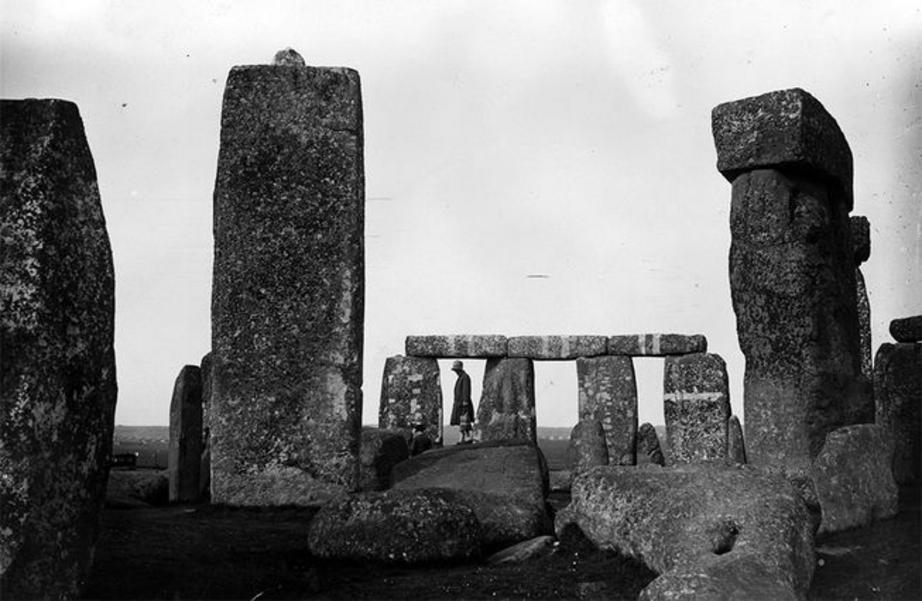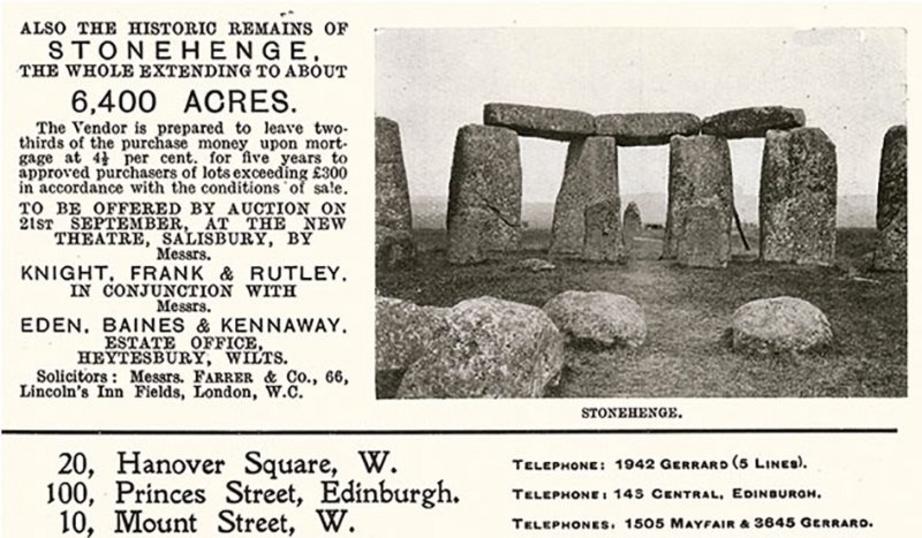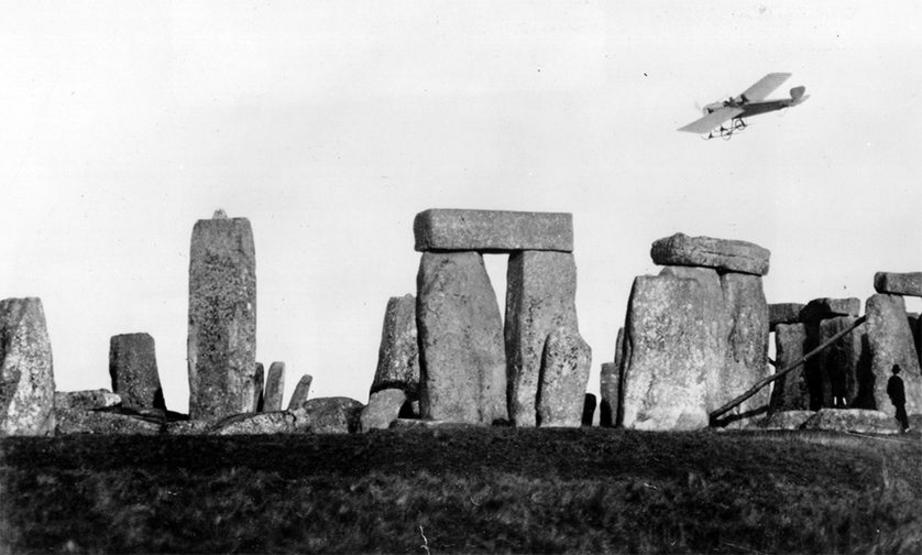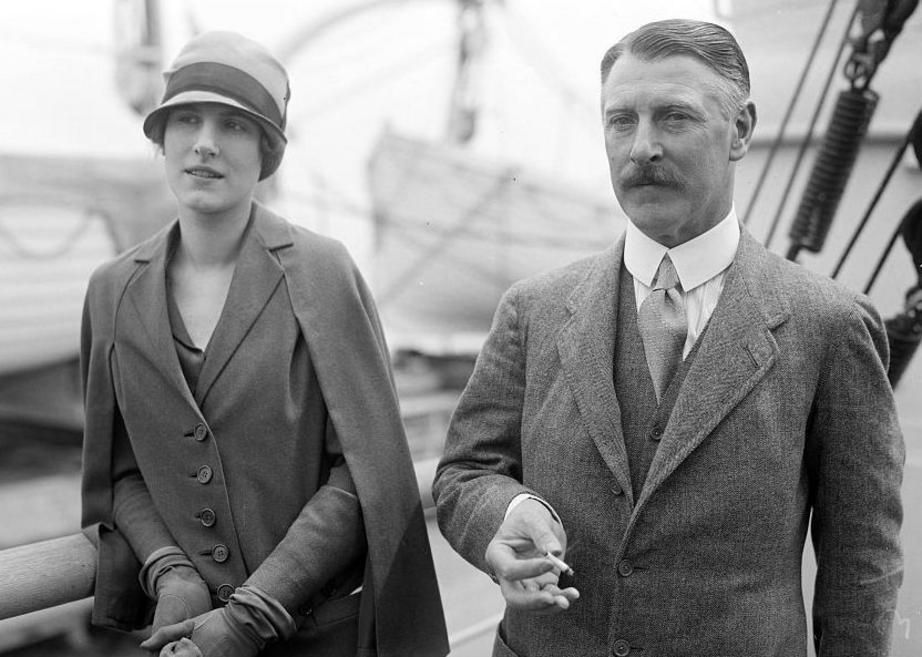When Stonehenge was for sale
The site is an iconic landmark today — but it wasn't back then.

Stonehenge in 1920, only a few years after the site was donated to the government. (Photo: Hulton Archive/Getty Images)
If you happened to be perusing the pages of the British magazine Country Life in September 1915, you likely would have come across an advert in the property section that, through modern eyes, would appear to be a practical joke.
There, looming large in a black-and-white photograph, stand the iconic monoliths of Stonehenge, advertised as a companion feature for an estate sale spanning some 6,400 acres. Incredibly, if you had deep pockets in the early 20th century, you could have purchased Stonehenge.

In 1915, the historic site of Stonehenge could have been yours for less than $10,000. (Photo: Country Life Magazine)
History on the auction block
Since the first stones were raised more than 4,000 years ago, the land under Stonehenge has been claimed by famers, kings and queens, and other owners lost to history. From the Middle Ages to the early 19th century, the site was in private hands, with the Antrobus family of Cheshire purchasing the landmark in 1824. When the family's only living heir was killed fighting in France during World War I, the decision was made to sell the estate. Unfortunately, there were no interested buyers for the complete lot, which included a mansion, farmhouse, and accompanying gardens, and the family decided to divide the property and place each part up for auction.
Which is how, on Sept. 21, 1915, at promptly 2 p.m., Stonehenge and some surrounding 30 acres hit the auction block as one of 89 lots from the Antrobus estate sale. Despite its reputation as a well-known British landmark and tourist magnet, interest in owning Stonehenge wasn't exactly high.

A plane flies low over Stonehenge in this photo circa 1911. (Photo: Hulton Archive/Getty Images)
Under the direction of auctioneer Sir Howard Frank, bidding on the historical site began at £5,000 and quickly petered out at £6,000. According to a transcript from the auction, an incredulous Frank urged the two remaining bidders to respectfully aim higher.
"Gentlemen," he observed quietly, "it is impossible to value Stonehenge. Surely £6,000 is poor bidding, but if no one bids me any more, I shall set it at this price. Will no one give me any more than £6,000 for Stonehenge?"
Despite these pleas, when the hammer came down on lot 15, the final price was only £6,600 (about $8,700), a far cry from the tens of thousands of pounds the site was expected to draw. Stonehenge's new owner, a local barrister named Cecil Chubb, was perhaps even more surprised. According to reports, Chubb was sent to the auction by his wife to purchase some curtains. "But," he remarked after the purchase, "while I was in the room, I thought a Salisbury man ought to buy it, and that is how it was done."

Cecil and Mary Chubb, the last private owners of Stonehenge. (Photo: George Grantham Bain/Library of Congress)
It's claimed that Chubb presented his new purchase to his wife as a gift, who was apparently none too pleased. Stonehenge at the time was not in the state we think of today, with several of the upright stone collapsed and many more chipped or damaged by generations of visitors. She also may not have been too enthused on the "bargain" price of £6,600, which is just over $1 million in today's dollars.
Regardless, Mr. and Mrs. Chubb didn't hold on to the property for long. In October 1918, in a move that would earn him an honorary knighthood, Cecil deeded Stonehenge as a gift to the U.K. government.
“Stonehenge is perhaps the best known and the most interesting of our national monuments and has always appealed strongly to the British imagination," he wrote in a dedication bequeathing the landmark. "To me, who was born close to it and during my boyhood and youth visited it at all hours of the day and night, under every conceivable condition of weather – in driving tempests of hail, rain and snow, fierce thunderstorms, glorious moonlight and beautiful sunshine, it always has had an inexpressible charm. I became the owner of it with a deep sense of pleasure…[but] it has…been pressed upon me that the nation would like to have it for its own."

A post-WWI aerial photo of Stonehenge showing the decrepit nature of site. After Cecil Chubb's donation in 1918, the U.K. government funded a series of restorations to improve the landmark. (Photo: Wikipedia Commons)
As part of the conditions of the gift, Chubb stipulated that local residents should always be able to visit the stones for free, a request that the English Heritage still honors.
“It is odd to think that just 100 years ago, you could bid for Stonehenge,” curator Heather Sebire told the Guardian. "Who knows what would have happened to it if someone else had bought it? It was in a pretty perilous condition at the time and it appears that Chubb stepped in to make sure Stonehenge stayed in local ownership. Now it's under the guardianship of English Heritage and is safe forever."
